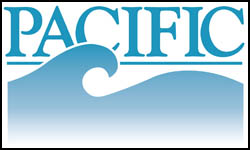As we approach the end of the 2021/22 tax year, you should review your pension contributions made since 6 April 2021 and consider whether or not you should make a further one-off personal pension contribution before 5 April 2022 to save tax and to utilise any carried-forward relief from 2018/19 which will be lost if not used by then. Tax relief is available on personal pension contributions up to 100% of relevant earnings or £3,600 (whichever is the highest), though this figure may be restricted by the annual allowance and any available carried-forward relief.
Please remember that in most circumstances you will make your personal pension contributions net of basic rate tax, therefore if you wish to utilise £10,000 of your available pension relief you will need to make a net contribution to your pension scheme for £8,000. Your pension scheme will then reclaim the £2,000 tax credit from HM Revenue & Customs on your behalf, adding this to your pension savings to give you a gross contribution of £10,000.
Irrespective of whether you or your employer makes a pension contribution it is important to remember that the standard annual allowance for 2021/22 for all pension contributions is £40,000 plus any unused allowance brought forward from any of the previous three tax years. Your annual allowance may be lower (known as the tapered annual allowance) if your income exceeds £200,000 or if you are only entitled to the Money Purchase Annual Allowance of £4,000 because you have previously flexibly accessed your pension savings. We will be happy to discuss with you the amount that you are considering putting into your pension to ensure that you do so tax efficiently.
Should your total pension contributions for the tax year exceed your annual allowance plus any available brought forward relief from earlier years you will incur an Annual Allowance Excess Charge. If the charge is more than £2,000, and this has arisen because your pension contributions exceeded £40,000, you can ask your pension provider to pay the charge to HM Revenue & Customs for you out of your pension pot, but you must tell them to do so before 31 July in the year following the year in which the tax year to which the annual allowance charge relates ended. Put simply, for the 2021/22 charge, you have until 31 July 2023 to notify the scheme.
If, however, the annual allowance excess charge has arisen because your pension contributions did not exceed £40,000 but, instead, exceeded the tapered annual allowance or the money purchase annual allowance you may still ask the pension scheme to pay the charge for you voluntarily out of the pension pot, but they do not have to do this and the scheme may have it’s own deadline for you to request this. The deadline could be as soon as 31 July 2022, therefore, you should also consider ensuring that your 2021/22 Self Assessment Tax Return is prepared soon after 5 April 2022 so that the annual allowance excess charge can be calculated leaving you enough time to ask the scheme to pay this for you. If you delay and miss the scheme’s deadline, this will increase your tax payment due on 31 January 2023.
As a final point, if you make a personal pension contributions that does not exceed the annual allowance but does exceed 100% of your relevant earnings for the year, you will need to inform your pension provider as soon as possible as they will need to repay the excess income tax claimed from HM Revenue & Customs and may also need to refund the excess net contribution to you. You should try and avoid this situation from arising.
Should you wish to discuss this further, then please contact us.
If you do not have a pension advisor and if Pacific Financial Planning does not already advise you but you would like advice, then please do not hesitate to contact SharonRigby@pacificgroup.co.uk
